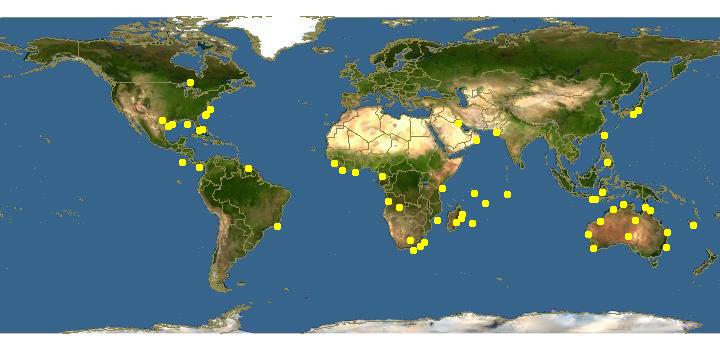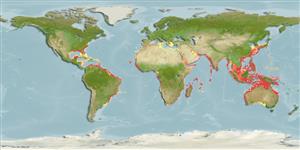http://www.fishbase.org/Summary/speciesSummary.php?genusname=Carcharhinus&speciesname=brevipinna ---> http://192.134.151.83/Summary/speciesSummary.php?genusname=Carcharhinus&speciesname=brevipinna
http://192.134.151.83/Summary/speciesSummary.php?genusname=Carcharhinus&speciesname=brevipinna ---> https://fishbase.mnhn.fr/Summary/speciesSummary.php?genusname=Carcharhinus&speciesname=brevipinna
https://fishbase.mnhn.fr/Summary/speciesSummary.php?genusname=Carcharhinus&speciesname=brevipinna ---> https://fishbase.mnhn.fr/summary/Carcharhinus-brevipinna.html
Carcharhinus brevipinna, Spinner shark : fisheries, gamefish

You can
sponsor
this page
Common name (e.g. trout)
Genus + Species (e.g. Gadus morhua)
-

-
About this page
-
Languages
-
User feedbacks
-
Citation
-
Uploads
-
Related species
-


 Spinner shark
Add your observation in
Fish Watcher
Upload your
photos
and
videos
Spinner shark
Add your observation in
Fish Watcher
Upload your
photos
and
videos
Pictures
|
Google image
 Carcharhinus brevipinna
Carcharhinus brevipinna
Picture by
Randall, J.E.
Elasmobranchii (sharks and rays) >
Carcharhiniformes
(Ground sharks) >
Carcharhinidae
(Requiem sharks)
Etymology:
Carcharhinus:
karcharos
(Gr.), sharp or jagged;
rhinus
, an ancient name for sharks, from
rhine
(Gr.), rasp, both words alluding to a shark's jagged, rasp-like skin. (
See ETYFish
)
;
brevipinna:
brevis
(L.), short;
pinna
(L.) fin, referring to small pectoral and first dorsal fins. (
See ETYFish
)
.
Environment: milieu / climate zone / depth range / distribution range
Ecology
Marine; reef-associated; oceanodromous (Ref.
51243
); depth range 0 - 100 m (Ref.
27000
), usually 0 - ? m (Ref.
55179
). Subtropical; 40°N - 38°S, 100°W - 155°E (Ref.
55179
)
Atlantic, Mediterranean and Indo-West Pacific, warm temperate and tropical (Ref.
58085
). Often referred to as
Carcharhinus limbatus
in the past.
Length at first maturity / Size / Weight / Age
Maturity: L
m
205.8
, range 170 - 266 cm
Max length : 300 cm TL male/unsexed; (Ref.
26999
); common length : 250 cm TL male/unsexed; (Ref.
30573
); max. published weight: 89.7 kg (Ref.
40637
); max. reported age: 16 years (Ref.
127272
)
Dorsal
spines
(total): 0;
Dorsal
soft rays
(total): 0;
Anal
spines
: 0;
Anal
soft rays
: 0. A slender shark with a long, narrow, pointed snout, long gill slits and small, narrow-cusped teeth; first dorsal fin small; no interdorsal ridge; labial furrows longer than in any other grey shark (Ref.
5578
). Grey above, white below, with a conspicuous white band on sides; second dorsal, anal, undersides of pectorals and lower caudal-fin lobe black or dark grey-tipped in subadults and adults, but unmarked or nearly so in small individuals (Ref.
9997
).
Found on the continental and insular shelves from close inshore to offshore (Ref.
244
). Makes vertical spinning leaps out of the water as a feeding technique in which the sharks spins through a school of small fish with an open mouth and then breaks the surface (Ref.
9997
). Feeds mainly on pelagic bony fishes, also small sharks, cuttlefish, squids, and octopi (Ref.
244
,
5578
). Viviparous (Ref.
50449
). Forms schools (Ref.
244
). Highly migratory off Florida and Louisiana and in the Gulf of Mexico (Ref.
244
). Regularly caught in fisheries where found (Ref.
244
). Utilized fresh and dried salted for human consumption (Ref.
244
). Fins probably used in the oriental shark fin trade, and livers for vitamin oil production (Ref.
9997
).
Viviparous, with a yolk-sac placenta; bears up to 20 young (Ref.
5578
); 3-15 pups (Ref.58048). Size at birth 60 to 80 cm (Ref.
6871
). Distinct pairing with embrace (Ref.
205
).
Compagno, L.J.V.
, 1984. FAO Species Catalogue. Vol. 4. Sharks of the world. An annotated and illustrated catalogue of shark species known to date. Part 2 - Carcharhiniformes. FAO Fish. Synop. 125(4/2):251-655. Rome: FAO. (Ref.
244
)
IUCN Red List Status (Ref.
130435
)
Vulnerable (VU)
(A2bd); Date assessed:
11 February 2020
CITES
Appendix II:
International trade monitored
Not Evaluated
Threat to humans
Harmless (Ref.
5485
)
Human uses
Fisheries: commercial; gamefish: yes
FAO - Publication:
search
|
FishSource
|
Sea Around Us
More information
Countries
FAO areas
Ecosystems
Occurrences
Introductions
Stocks
Ecology
Diet
Food items
Food consumption
Ration
Common names
Synonyms
Metabolism
Predators
Ecotoxicology
Reproduction
Maturity
Spawning
Spawning aggregation
Fecundity
Eggs
Egg development
Age/Size
Growth
Length-weight
Length-length
Length-frequencies
Morphometrics
Morphology
Larvae
Larval dynamics
Recruitment
Abundance
BRUVS
References
Aquaculture
Aquaculture profile
Strains
Genetics
Electrophoreses
Heritability
Diseases
Processing
Nutrients
Mass conversion
Collaborators
Pictures
Stamps, Coins Misc.
Sounds
Ciguatera
Speed
Swim. type
Gill area
Otoliths
Brains
Vision
Tools
E-book
|
Field guide
|
Identification keys
|
Length-frequency wizard
|
Life-history tool
|
Point map
|
Classification Tree
|
Catch-MSY
|
Special reports
Check for Aquarium maintenance
|
Check for Species Fact Sheets
|
Check for Aquaculture Fact Sheets
Download XML
Summary page
|
Point data
|
Common names
|
Photos
Internet sources
AFORO (otoliths) |
Aquatic Commons
|
BHL
|
Cloffa
|
BOLDSystems
|
Websites from users
|
Check FishWatcher
|
CISTI
|
Catalog of Fishes
:
genus
,
species
|
DiscoverLife
|
ECOTOX
| FAO - Publication:
search
|
Faunafri
| Fishipedia |
Fishtrace
| GenBank:
genome
,
nucleotide
|
GloBI
|
GoMexSI
(interaction data)
|
Google Books
|
Google Scholar
|
Google
|
IGFA World Record
|
MitoFish
|
National databases
|
Otolith Atlas of Taiwan Fishes
|
PubMed
|
Reef Life Survey
|
Socotra Atlas
|
Tree of Life
| Wikipedia:
Go
,
Search
| World Records Freshwater Fishing |
Zoological Record
Estimates based on models
Preferred temperature (Ref.
123201
): 22 - 29, mean 27.4 °C (based on 3950 cells).
Phylogenetic diversity index (Ref.
82804
): PD
50
= 0.5000 [Uniqueness, from 0.5 = low to 2.0 = high].
Bayesian length-weight: a=0.00380 (0.00238 - 0.00608), b=3.07 (2.94 - 3.20), in cm total length, based on LWR estimates for this species & Genus-body shape (Ref.
93245
).
Trophic level (Ref.
69278
): 4.2 ±0.6 se; based on diet studies.
Generation time: 5.2 ( na - na) years. Estimated as median ln(3)/K based on 2
growth studies.
Resilience (Ref.
120179
): Very Low, minimum population doubling time more than 14 years (Fec=3).
Fishing Vulnerability (Ref.
59153
): High vulnerability (62 of 100).
Price category (Ref.
80766
):
Medium
.
Nutrients (Ref.
124155
): Calcium = 3.98 [0.74, 21.53] mg/100g; Iron = 0.386 [0.096, 1.168] mg/100g; Protein = 23.1 [20.3, 25.3] %; Omega3 = 0.154 [0.058, 0.388] g/100g; Selenium = 16.9 [4.9, 52.4] μg/100g; VitaminA = 21.3 [7.3, 64.7] μg/100g; Zinc = 0.319 [0.150, 0.630] mg/100g (wet weight);
Back to Search
Random Species
Back to Top
Accessed through:
Not available
FishBase mirror site :
localhost
Page last modified by :
mrius-barile
- 20 July 2016
Fatal error
: Uncaught ArgumentCountError: Too few arguments to function checkEcotox(), 1 passed in /var/www/html/summary/speciessummary.php on line 2304 and exactly 3 expected in /var/www/html/includes/speciessummary.lib.php:2579 Stack trace: #0 /var/www/html/summary/speciessummary.php(2304): checkEcotox() #1 {main} thrown in
/var/www/html/includes/speciessummary.lib.php
on line
2579
|






